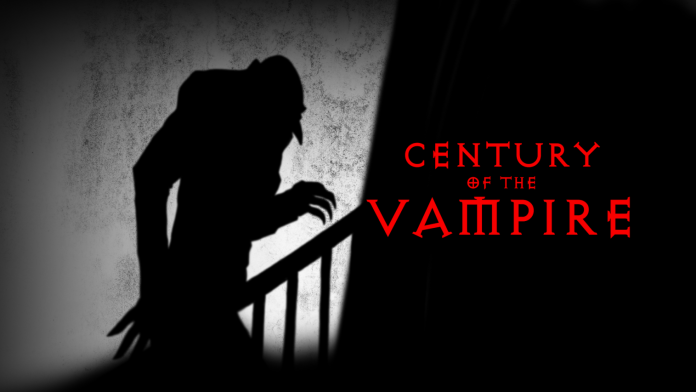Welcome to the Century of the Vampire, an ongoing weekly feature where Goonhammer managing editor Jonathan Bernhardt watches some piece of vampire media, probably a movie but maybe eventually television will get a spot in here too, and talks about it at some length in the context of both its own value as a piece of art and as a representation of the weird undead guys that dominate western pop culture who aren’t (usually) zombies.
Last week, Bernhardt reviewed the 2000 E. Elias Merhige film Shadow of the Vampire. Today, he looks at the 1992 Francis Ford Coppola film, Bram Stoker’s Dracula. This article will contain spoilers.
Finally, it’s time for the sexy vampires to take center stage.
This is the general rough distinction between the Nosferatu family of movies and the various Dracula: If the vampire looks like a gross old alien or insect man, it’s a Nosferatu; if it’s a dangerous, sexy older man with hopelessly tragic vibes, that’s a Dracula. The distinction’s a bit pat and doesn’t cover all possible permutations of either (and there are certainly many other kinds of vampire films than Nosferatus and Draculas), but there you have it. And we’re starting with the most Dracula of all the Draculas, the 1992 film Bram Stoker’s Dracula, directed by Francis Ford Coppola.
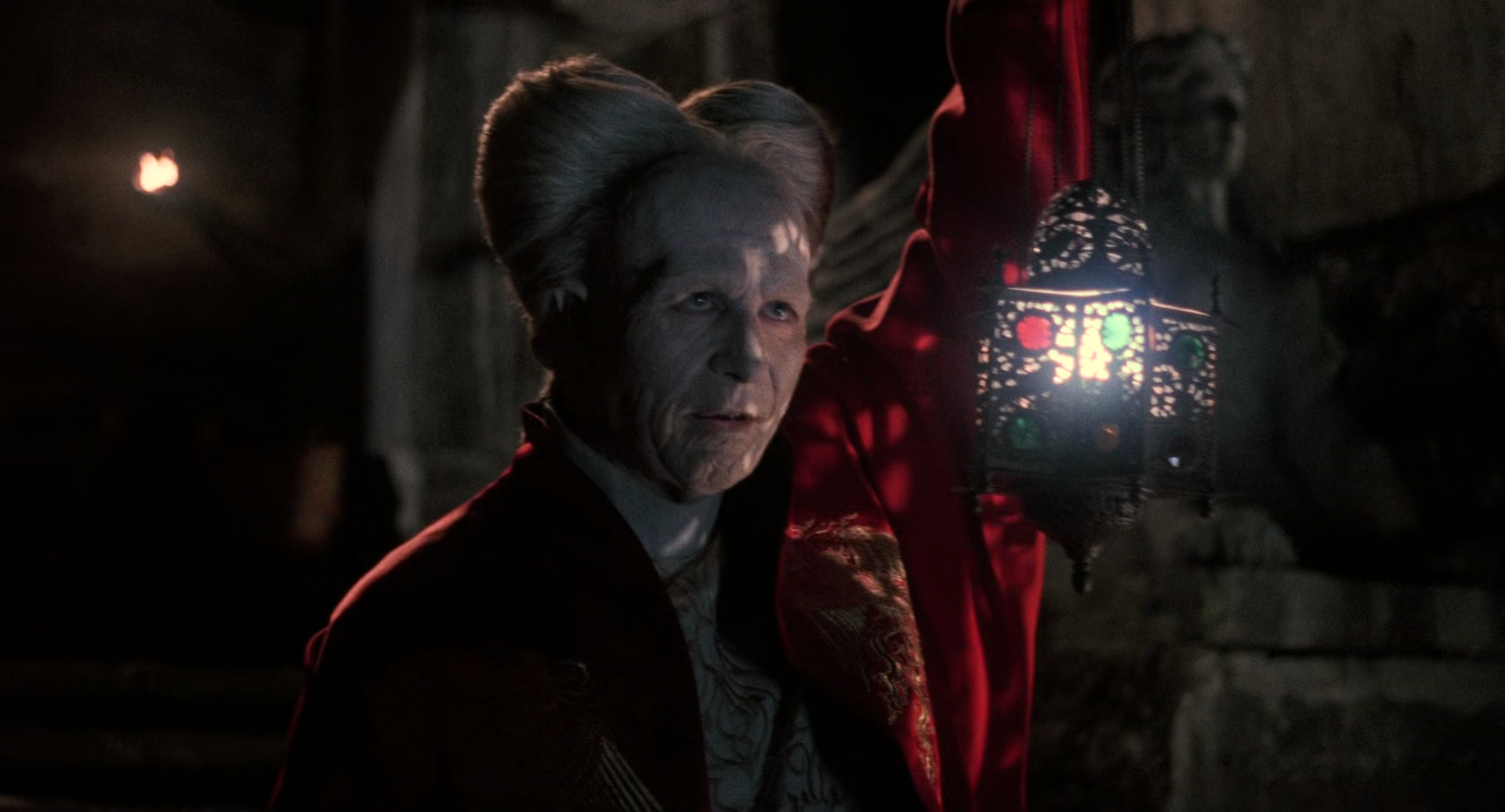
Weighing in at 128 minutes of runtime on a $40 million budget (call that something around $92 million in 2025), this is a creature of a different sort than the previous Nosferatus we’ve looked at as a production as well as a creative work. Coppola, something of a joke of an elder statesman of film these days after the disaster of his last twenty years, was a more respected name in Hollywood then, only a decade or so removed from his classic work and having just finished trying to recapture that magic again less than successfully with 1990’s The Godfather: Part III. Keanu Reeves, Wynona Ryder, and Gary Oldman were not quite yet the stars they became because of their roles in this film, but Oldman had just done JFK, Reeves had Point Break the previous summer, and Ryder was known for Heathers and Beetlejuice (and a stormy exit from The Godfather: Part III, which is part of the lore of how this project came together in the first place). Anthony Hopkins had been a presence on British television for many years, but his performance as Hannibal Lector in Silence of the Lambs the year before catapulted him into this role; he’d go on to be one of the biggest stars of the nineties. The sets are sumptuous and the effects are excellent and practical; Coppola has the resources to ruin a bedroom with a swimming pool’s worth of fake blood for a half-second shot at the end of Lucy Westenra’s demise, and he deploys those resources as needed.
This is not a totally faithful adaptation of Stoker’s book — the opening scene is entirely original, and Coppola adds or changes the emphasis of scenes in the middle of the film and makes a fairly important change to the ending to accommodate that opening scene — but part of this film’s pitch is that it was going to give the original epistolary novel that Murnau hacked down for both creative and budgetary reasons its full creative due. The plot would be adopted as presented, and snippets from the book’s letters would be taken to serve as narration to cover the transition between jumps in location and time. This lays bare an important part of the epistolary narrative conceit: In order to tell your story through written documents such as letters, people have to be in different places from one another. There’s a lot of excessive moving about in Bram Stoker’s book that more straightforward renderings of the tale can excise; the most obvious of these is the Harkers traveling to Romania to be wed and then back to London in the midst of Dracula’s rampage there; in the book, this is an excuse for Mina to be sending letters to Lucy (from Budapest in the Stoker). This culminates in both book and film with a final act trek all the way back to Transylvania where Dracula is finally put to rest.

Murnau cleans all of this up in his version of events: His Nosferatu travels from his othered, foreign domain to the clean metropole, messes up its pots and pans, attacks his holy victim and dies there. The basic Murnau formula features greatly reduced roles for the analogues to Lucy, Seward, and Van Helsing; no extraneous galivanting around eastern Europe; no gaggle of suitors for Lucy or trio of vampire wives for Dracula to complicate the essential love triangle. It’s actually pretty interesting that his adaptation caused such a legal stir for him in Germany that all known copies in that country were destroyed, because if he hadn’t gotten into a prior dispute with the Stoker estate over the rights to the work he could have argued (perhaps still unsuccessfully) that this was an entirely different vampire story. Jonathan Harker is in Dracula’s castle by the ten minute mark in Coppola’s film; the montage intercutting the doomed voyage of the Demeter with Dracula’s spirit entering into the body of a wolf from the London Zoo and fucking Lucy in the gothic hedge maze behind the Holmwood estate happens before the forty minute mark. This is something of a pity, because the film gets substantially less visually interesting once it starts having to depict London at the turn of the twentieth century; it also demonstrates just how much of the film takes place after Dracula gets his groove back and begins romancing Mina.
So yes, there are a number of reasons to add back in all that fat that Murnau cut outside of being able to advertise that finally someone was doing right by old Bram Stoker. Adding Dracula’s brides back into the picture gives you an excuse for naked, evil Monica Bellucci, for instance; adding back in all the various suitors for Lucy Westenra’s hand lets you cast three additional hot men (Billy Campbell, Richard E. Grant and returning friend Cary Elwes) to stand around hollering, swinging swords and shooting guns in addition to already-formidable dumb hot guy Keanu Reeves. But the biggest reason is that doing so adds space for Dracula to be a recognizably human character when he participates in the film. This brings us to the most consequential changes Coppola makes in his film: The addition of the famous opening scene set in 1461, and how it informs his scenes with Mina and his death at the end of the film. In short, the addition of Dracula as a viewpoint character in his own story.

You have probably seen the opening scene of this film somewhere even if you haven’t sat through this entire picture; it tells the story of the Romanian noble who protected Christendom from the marauding Turkish armies with legendary brutality, but whose wife was tricked into believing he had died in battle, and so took her own life. When informed by his top bishop at the moment of his greatest grief that due to suicide, she would not go to Heaven, Vlad Dracul renounced God and promised an eternity of darkness as his revenge. God took him up on his offer, complete with a cross exploding in a shower of blood. Gary Oldman, free of the various prosthetics which he’ll be wearing for a majority of the runtime, does the sort of great crazy wildman performance which he was known for as a younger actor; the effects work is fantastic. There’s so much blood. That bishop really should have learned to read the room.
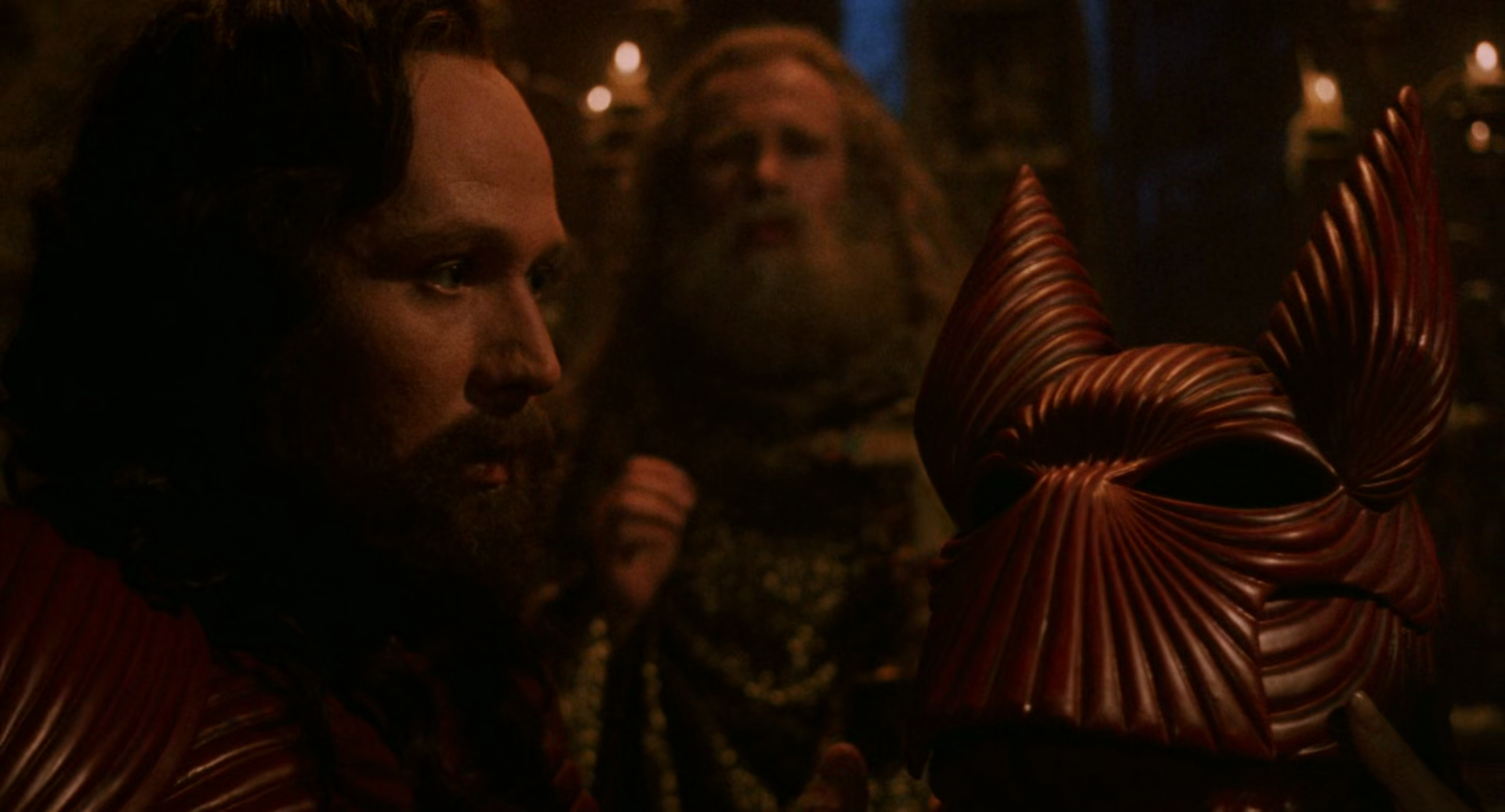
This scene sets up the fundamental romance that separates most Draculas from most Nosferatus: Mina Harker isn’t a thing the vampire simply lusts after, either in the lower animal sense of the Eggers monster or the higher-functioning but still base lechery of Max Schreck in Shadow of the Vampire; here, she is a woman and a full person — she is his wife, Elisabeta, reincarnated down through the ages. Her face is all over the frescos of his castle; in the chapel where the movie begins and ends, the two of them are depicted together on the ceiling. He is a monster, and a vicious and murderous one besides, but for her he is a man and a husband who loves her. If that’s the story you’re going to tell, then your Dracula can’t look like a hideous freak the whole time. He’s gotta be sexy.
I suppose the sexy version of Vlad in this picture is to taste. Oldman’s an attractive man — this entire cast has been chosen for maximal sexiness, both men and women; even Tom Waits as Renfield is compelling in his own Hot Eraserhead way — but to a modern eye this look comes off a bit more like steampunk cosplay by a certain kind of internet than obviously it would have back in the early nineties. Regardless, this is the man that Mina does fall genuinely in love with even as she runs back to the continent to get super-married to a rapidly-aging Jonathan in an Orthodox church (any attempt to juxtapose Jonathan’s supernatural aging with Dracula’s revitalization is lost in the decision to just give Keanu increasingly grey wigs rather than mar that beautiful face with prosthetics or age makeup).
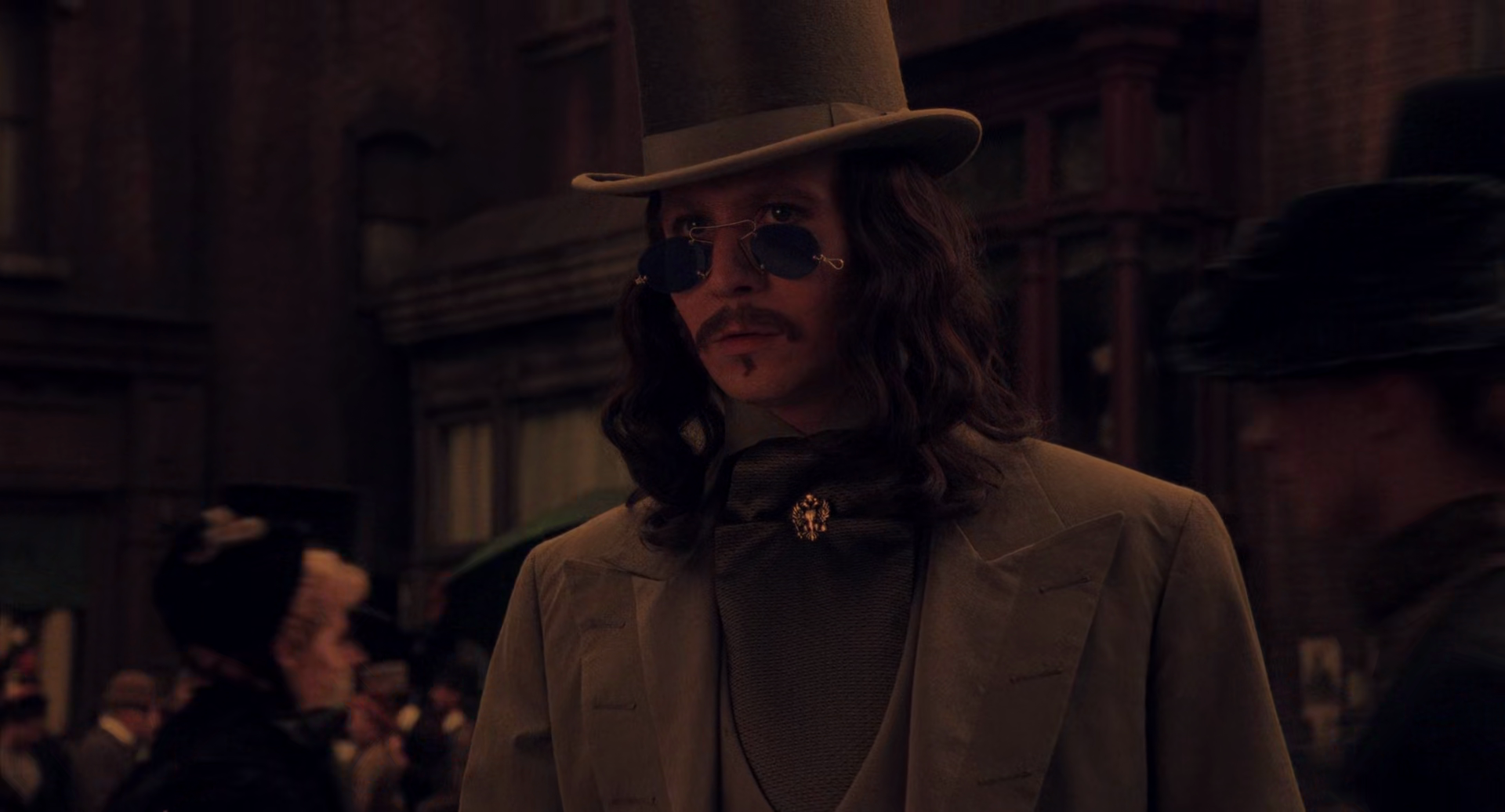
When Dracula and Mina finally consummate that older marriage in London, the one he had with Elisabeta, it is she who initiates the carnality and she who demands to be turned, as the vampire himself is struck by guilt — she feeds off of him. Here he is the sexy Gary Oldman Dracula…right up until the moment her husband, Van Helsing, and the oaf patrol bust down the door and are confronted by a ten foot tall movie monster.
Sex is all over this picture; by the early nineties the horror industry and the softcore pornography industry were old friends, whether that made itself known in “teen” slashers with mid-twenties actors getting naked or in the great European tradition of putting sex in schlock horror — French director Jean Rollin, for instance, straddled that line repeatedly: His 1975 vampire film Levres de Sang (Lips of Blood) had a regular cut of the film with some nudity, and then a hardcore pornographic cut titled Suce-moi Vampire (Suck Me, Vampire) into which he added full-penetration sex scenes with the same actors. Obviously for a major American release with major stars such as this, the film limits itself to topless women, but simple nudity is not what “sexy” is about. It’s not even just about casting Keanu* and Winona, the two most ethereally beautiful young leads available at the time, as Jonathan and Mina.
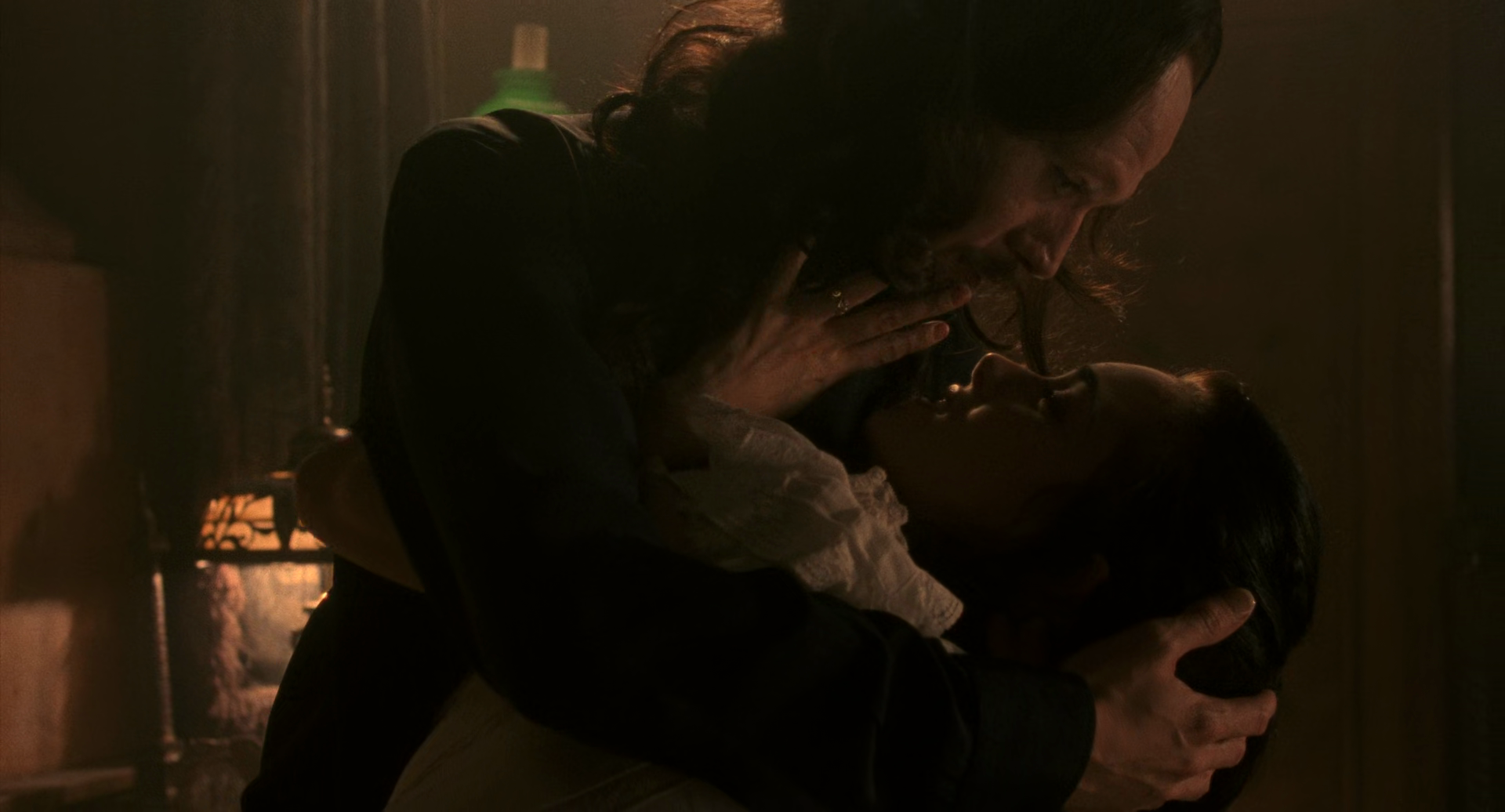
“Sexy” is about the high-quality nightgowns that Mina and Lucy just happen to throw on to go dancing (and kissing) in the rain before Lucy goes out barely-dressed to have unholy sex with wolfman-Dracula in the hedge maze. “Sexy” is about replacing Jonathan Harker cutting his pinkie at the dinner table with him cutting himself shaving, and Count Dracula draping himself over the young man, licking the razor and commenting on how unmanly he looks without a beard. “Sexy” is Lucy’s tomb in proper Victorian England having High Gothic Sexy Evil Babe statuary at the entrance. “Sexy” is casting Anthony Hopkins, who six years later would give a smoldering performance of his own alongside Antonio Banderas and Catherine Zeta-Jones in The Mask of Zorro, as your Van Helsing so that when you do a scene of Mina attempting a horny succubus attack on the old doctor under the influence of Dracula’s brides, it comes off as tense and sexually-charged instead of just gross.
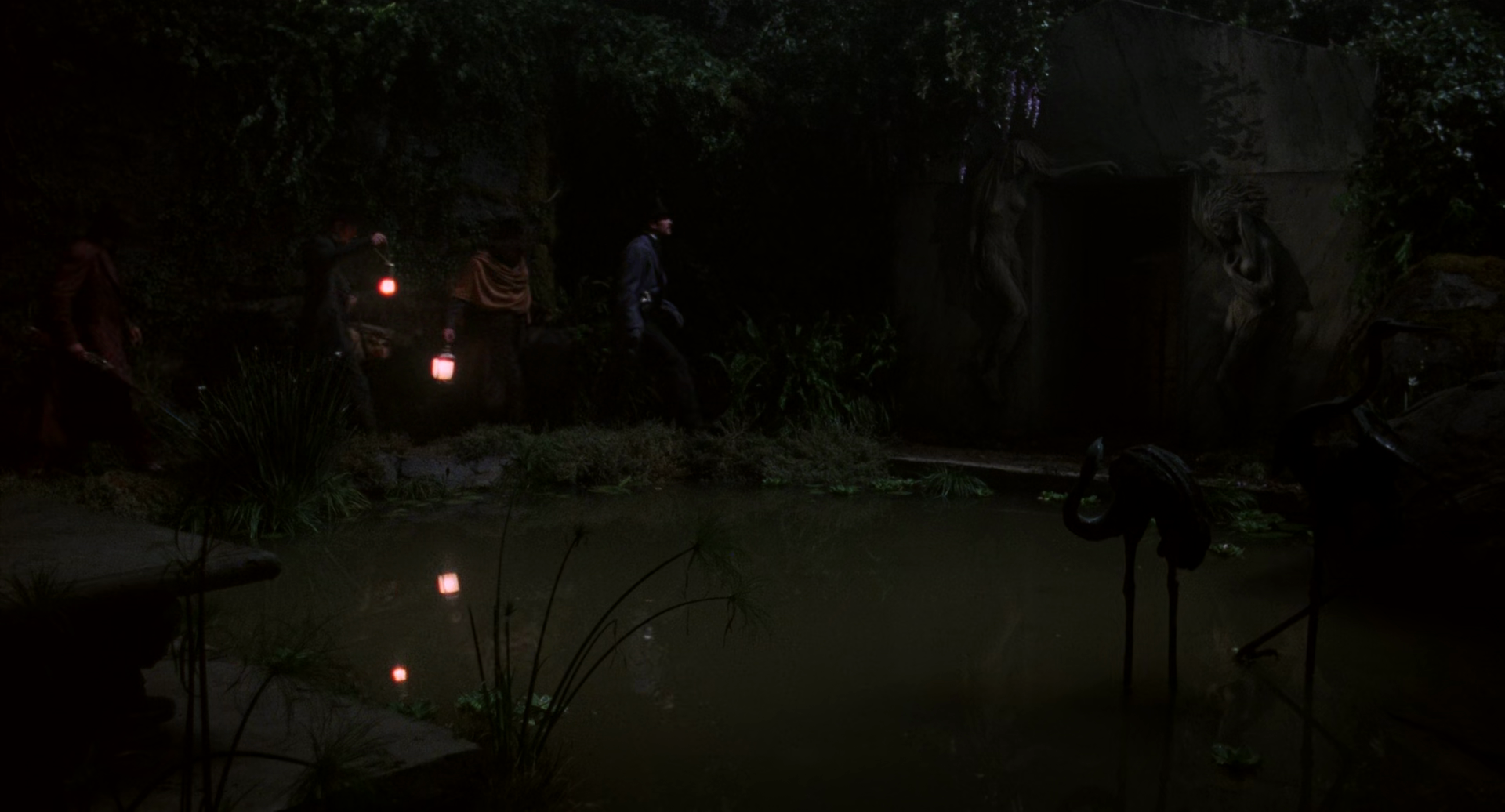
This is how Bram Stoker’s Dracula became an important pivot point and touchstone for modern vampire media, outside of just being a huge box office success that proved to Hollywood there was money to be made here at scale. Sexy vampires obviously existed for the genre heads and horror freaks (we’ll be looking at eighties vampire films soon enough), but you can draw a direct line from this to Interview with a Vampire (1994) and then off to the races with Blade, Underworld, stuff like Queen of the Damned and Dracula 2000, and so on. This is the sexy vampire template, and the pendulum wouldn’t start to swing back until the chaste American Evangelicalism of Twilight came on the scene. But that’s a movie for another time.
* Right, the Keanu thing. He’s fine. He’s not good; he’s clearly the weakest of the leads in terms of ability and he delivers his performance accordingly, but his job in this film is to have beautiful but boyish good looks that contrast with Dracula’s bestial masculinity, and otherwise act like a human golden retriever. He gets the job done. Pretty unfortunate for him that this performance defined the next two decades of his career.
Have any questions or feedback? Drop us a note in the comments below or email us at contact@goonhammer.com. Want articles like this linked in your inbox every Monday morning? Sign up for our newsletter. And don’t forget that you can support us on Patreon for backer rewards like early video content, Administratum access, an ad-free experience on our website and more.
